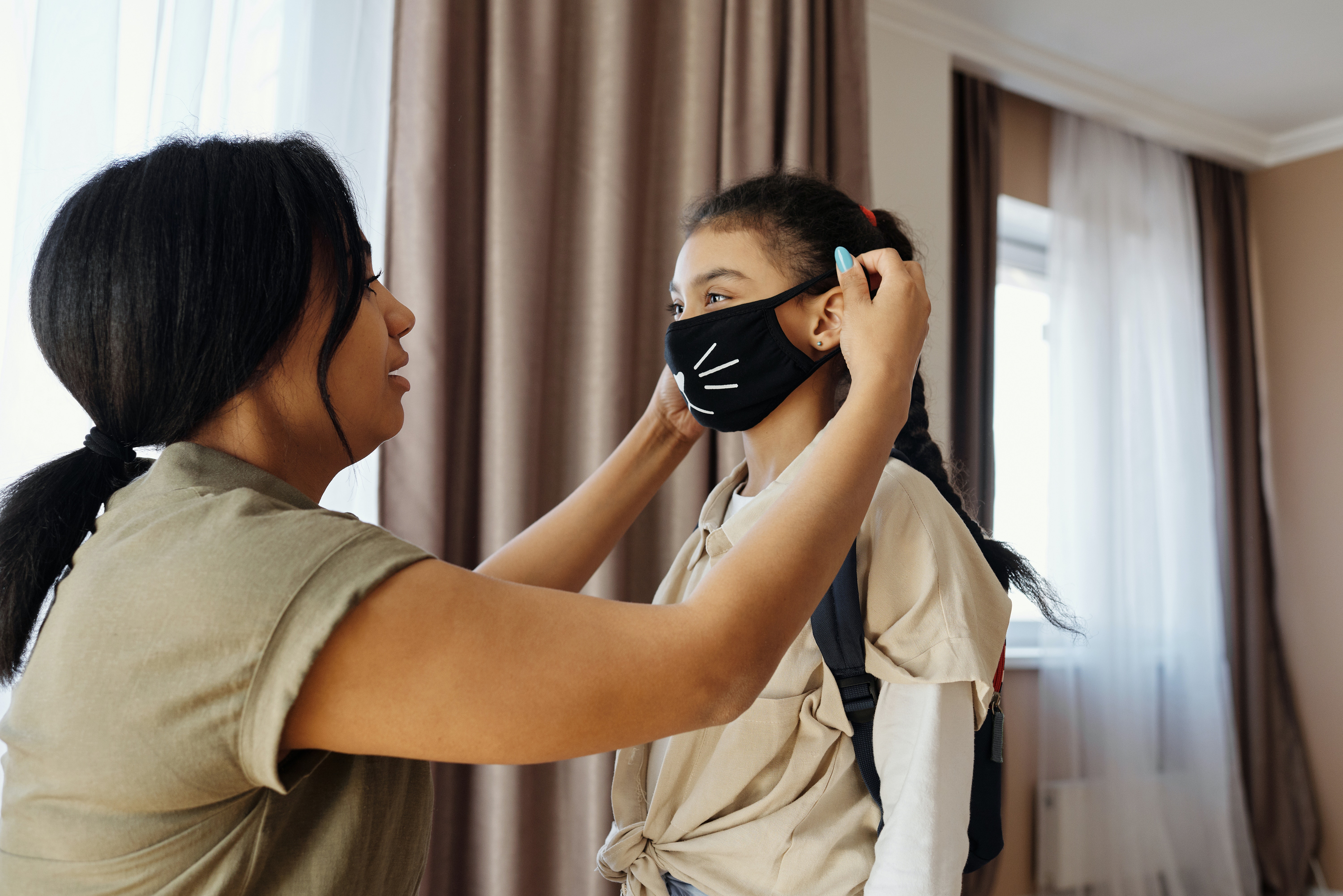Wearing masks is an important step towards keeping children and adults safe during the COVID-19 pandemic. To reduce transmission of the virus, the CDC is currently recommending children aged 2 and older wear a mask in all indoor public settings, and many schools are starting to require them.
Still, getting children on board with mask-wearing can be difficult and even frustrating at times. To help navigate this process, we’ve put together a list of several ways you can help get your household on board with mask wearing. Together we can make these changes for children less stressful and ultimately save lives.
Use simple, age-appropriate terms when explaining the need for masks.
Some resources that may help communicate expectations, especially for younger children, include:
- Using one of the several children’s books about wearing masks, such as Heroes Wear Masks, Mia’s Mask, Lucy’s Mask or A Little SPOT Wears a Mask.
- Utilizing videos to keep kids engaged. Sesame Street has several useful clips, including Grover explaining healthy habits during the pandemic and one that’s geared towards helping children with autism understand the need for masks.
- Older children may be interested in the science behind mask-wearing. If that’s the case with your children, consider checking out this news clip from Bill Nye the Science Guy.
- Sesame Street also has printable sheets for use in the home or within gathering spaces or classrooms.
Model the right behavior.
- Children love to mimic behavior. Even if you’re vaccinated, consider wearing a mask when with your children in public.
- Point out and show excitement when other children are wearing masks.
- Display positive energy about wearing your own mask and discuss how doing so is helping others.
- Stay consistent in your approach and expectations about mask wearing.
Include children in the process.
- Let children make as many mask-wearing decisions as possible. This could mean letting them pick out their favorite designs online or at the store. You could also ask them which mask they’d prefer to start the day wearing.
- Add masks to the checklist of items kids will need to pack before going out in public or heading to school. This may help them feel excited about having a new responsibility.
- Consider having mask-washing times together. Many children enjoy helping with laundry or getting their hands wet through hand-washing items.
Make it fun.
- Try testing out mask-wearing on a child’s favorite doll or toy.
- When children wear their masks properly, make note of their behavior and celebrate their success.
- If a child’s mask starts falling down, try to stay light-hearted and gently remind them how to put it back in place.
- Ensure masks fit properly, to help reduce as much friction as possible while children are active (in addition to curbing the spread of germs).
- Children are wired to soak up the emotions of those around them, so try your best to avoid negative comments about masks when they’re present.
Click for more information on Covid-19 In Schools, Coping During Covid-19, Families and COVID-19, and CDC resources.

